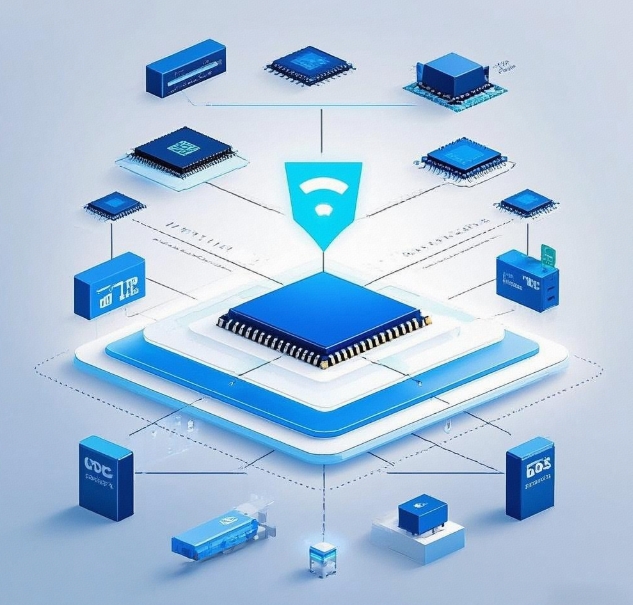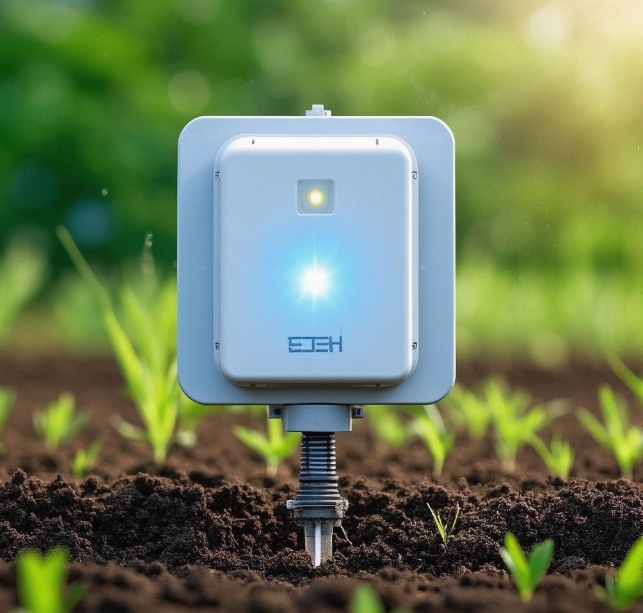Key Technologies in IoT Development: Sensors and Embedded Systems
- latest articles
- 1.DApp Development & Customization: Merging Diverse Market Needs with User Experience 2.Analysis of the Core Technical System in DApp Project Development 3.How to achieve cross-chain interoperability in Web3 projects? 4.How does the tokenization of points reconstruct the e-commerce ecosystem? 5.How to Set and Track Data Metrics for a Points Mall? 6.What is DApp Development? Core Concepts and Technical Analysis 7.Inventory of commonly used Web3 development tools and usage tips 8.Development of a Distribution System Integrated with Social E-commerce 9.Six Key Steps for Businesses to Build a Points Mall System 10.What is DApp Development? A Comprehensive Guide from Concept to Implementation
- Popular Articles
- 1.Future Trends and Technology Predictions for APP Development in 2025 2.Analysis of the DeFi Ecosystem: How Developers Can Participate in Decentralized Finance Innovation 3.From Zero to One: How PI Mall Revolutionizes the Traditional E-commerce Model 4.DAPP Development | Best Practices for Professional Customization and Rapid Launch 5.How to Develop a Successful Douyin Mini Program: Technical Architecture and Best Practices 6.Recommended by the Web3 developer community: the most noteworthy forums and resources 7.From Cloud Computing to Computing Power Leasing: Building a Flexible and Scalable Computing Resource Platform 8.Shared Bike System APP: The Convenient Choice in the Era of Smart Travel 9.How to Create a Successful Dating App: From Needs Analysis to User Experience Design 10.From Design to Development: The Complete Process of Bringing an APP Idea to Life
The Internet of Things (IoT), as a significant trend in the technology sector in recent years, has permeated various industries, transforming people's lifestyles and work patterns. The core concept of IoT is to connect various physical devices through the internet, enabling them to communicate with each other and share data, thereby achieving intelligent and automated management. In the development of IoT, sensor technology and embedded systems are undoubtedly two critical foundational technologies that provide the necessary support for the realization of IoT applications. This article will delve into these two technologies and analyze their applications and development in IoT.
1. The Core Role of Sensor Technology
1.1 Basic Definition and Classification of Sensors
Sensors are devices capable of detecting physical or chemical phenomena and converting them into signals that can be measured and processed. Their function is to "sense" various changes in the environment and convert these changes into data that can be processed by computers or other devices. There is a wide variety of sensors, including temperature sensors, humidity sensors, pressure sensors, light sensors, accelerometers, gas sensors, and more.
Sensors play an extremely important role in IoT systems by monitoring various environmental variables and transmitting data in real-time to data processing centers or cloud platforms. The significance of sensors in IoT applications can be highlighted through the following points:
Data Collection: Sensors act as the "bridge" between IoT devices and the external environment, enabling IoT systems to acquire real-time environmental data through their sensing capabilities.
Real-Time Capability: Many IoT applications rely on the high precision and real-time capabilities of sensors, such as temperature regulation in smart homes and environmental monitoring in smart agriculture.
Automated Control: By working in coordination with other devices, sensors help achieve automated control and intelligent decision-making. For example, in smart grids, sensors can monitor the operational status of the power system, provide timely feedback, and make adjustments.
1.2 Working Principles and Applications of Sensors
Taking temperature sensors as an example, their working principle typically involves measuring electrical signals generated by temperature changes in the environment to output data. Temperature sensors are widely used in smart homes, industrial production, and other fields. For instance, in smart air conditioning systems, temperature sensors can detect indoor temperatures in real-time and automatically adjust the cooling or heating modes to ensure indoor comfort.
Similarly, pressure sensors and gas sensors also play important roles in many fields. In intelligent transportation systems, pressure sensors can be used to detect traffic flow, while gas sensors can monitor air quality and environmental pollution. The widespread application of these sensors not only promotes the development of smart devices but also lays the foundation for the widespread adoption of IoT.
1.3 Trends in Sensor Development
With continuous technological advancements, sensor performance is constantly improving. In the future, sensor development will progress in the following directions:
Miniaturization and Integration: Future sensors will become more compact, allowing them to be embedded into smaller devices or even integrated directly onto surfaces for real-time environmental monitoring.
Low Power Consumption and High Sensitivity: As IoT devices demand higher energy efficiency, sensors will focus more on low-power designs while improving sensitivity and accuracy to handle more complex application scenarios.
Intelligence and Adaptability: Sensors will gradually incorporate intelligent functions, enabling them to automatically adjust their working modes based on environmental changes, thereby enhancing the accuracy and real-time capability of data collection.
2. The Role of Embedded System Technology
2.1 Definition and Components of Embedded Systems
An embedded system is a specialized computer system, typically composed of hardware and software, designed to perform specific tasks. Compared to traditional computer systems, embedded systems place greater emphasis on performance optimization, compact size, and high energy efficiency. They are widely used in consumer electronics, industrial control, intelligent transportation, medical devices, and other fields.
The components of an embedded system include:
Microprocessor (MCU): Responsible for system computation and control, typically using low-power, high-performance microcontrollers.
Sensor and Actuator Interfaces: Embedded systems need to connect with external sensors and actuators to perform data collection and control tasks.
Operating System and Software: Many embedded systems use real-time operating systems (RTOS) to ensure tasks are completed within strict time constraints.
2.2 Characteristics and Advantages of Embedded Systems
The advantages of embedded systems lie in their unique features such as low power consumption, high performance, compact size, and high reliability, making them highly suitable for IoT devices. The combination of embedded systems and sensors enables IoT devices to possess intelligent sensing, data processing, and control capabilities, thereby enabling more complex applications.
In the field of smart homes, embedded systems, when connected to various sensors and actuators, allow real-time monitoring and automatic adjustment of factors such as temperature, humidity, and lighting. For example, smart door locks combine embedded systems with fingerprint recognition sensors to automatically unlock when a user approaches, enhancing convenience and security.
2.3 Development and Challenges of Embedded Systems
During the development of embedded systems, developers typically need to focus on the following key elements:
Hardware Design and Optimization: The hardware design of embedded systems must ensure stability and efficiency, especially under resource constraints, requiring developers to optimize system performance through rational hardware design.
Software Development: Software development for embedded systems is generally based on programming languages like C/C++ and relies on real-time operating systems to ensure task timeliness. Developers also need to write appropriate drivers and application software tailored to different scenarios.
Power Management: Since IoT devices often need to operate for extended periods, low-power design becomes a critical consideration in embedded system development. Developers must carefully plan hardware and software power consumption to ensure system energy efficiency.
The development of embedded systems in IoT faces a series of challenges, particularly in data processing, connection stability, and security. However, with the continuous advancement of IoT technology, the performance of embedded systems is steadily improving, gradually overcoming these technical hurdles.
3. The Synergistic Role of Sensors and Embedded Systems in IoT
In IoT application scenarios, sensors and embedded systems are often closely integrated. Sensors are responsible for real-time perception of environmental changes, while embedded systems handle the processing and decision-making of the data collected by sensors. Through close collaboration, they jointly drive the progress and innovation of IoT technology.
For example, in smart agriculture, soil moisture sensors and weather sensors use embedded systems to monitor soil and air humidity, temperature, and other information in real-time. This data is transmitted to a central processing system, which adjusts the operation of irrigation equipment based on real-time data to ensure optimal growing conditions for crops. Such intelligent automated control systems can significantly enhance agricultural productivity and reduce water waste.
Additionally, the combination of sensors and embedded systems is widely applied in smart city applications. For instance, smart streetlights use light and temperature sensors to gather environmental information and automatically adjust lighting brightness and on/off status through embedded systems, reducing energy waste while improving urban lighting quality.
4. Conclusion
Sensor technology and embedded systems, as core technologies in IoT development, have demonstrated immense potential and application value across multiple fields. With continuous technological progress and innovation, sensors and embedded systems will become more intelligent, precise, and efficient, providing a stronger foundation for the widespread adoption and development of IoT. In the future, with the integration of technologies such as 5G and artificial intelligence, IoT application scenarios will become even more extensive, and the role of sensors and embedded systems will become increasingly vital.
-

How to Use IoT Development to Enhance Supply Chain Efficiency
With the rapid development of the global economy and the deepening of digital tr···
-

Development and Innovation of the Internet of Things in the Healthcare Sector
With the rapid advancement of information technology, the Internet of Things (Io···
-

Data Storage and Analysis Methods in IoT Development
The Internet of Things (IoT) is one of the most revolutionary innovations in tod···

 Blockchain
Blockchain












